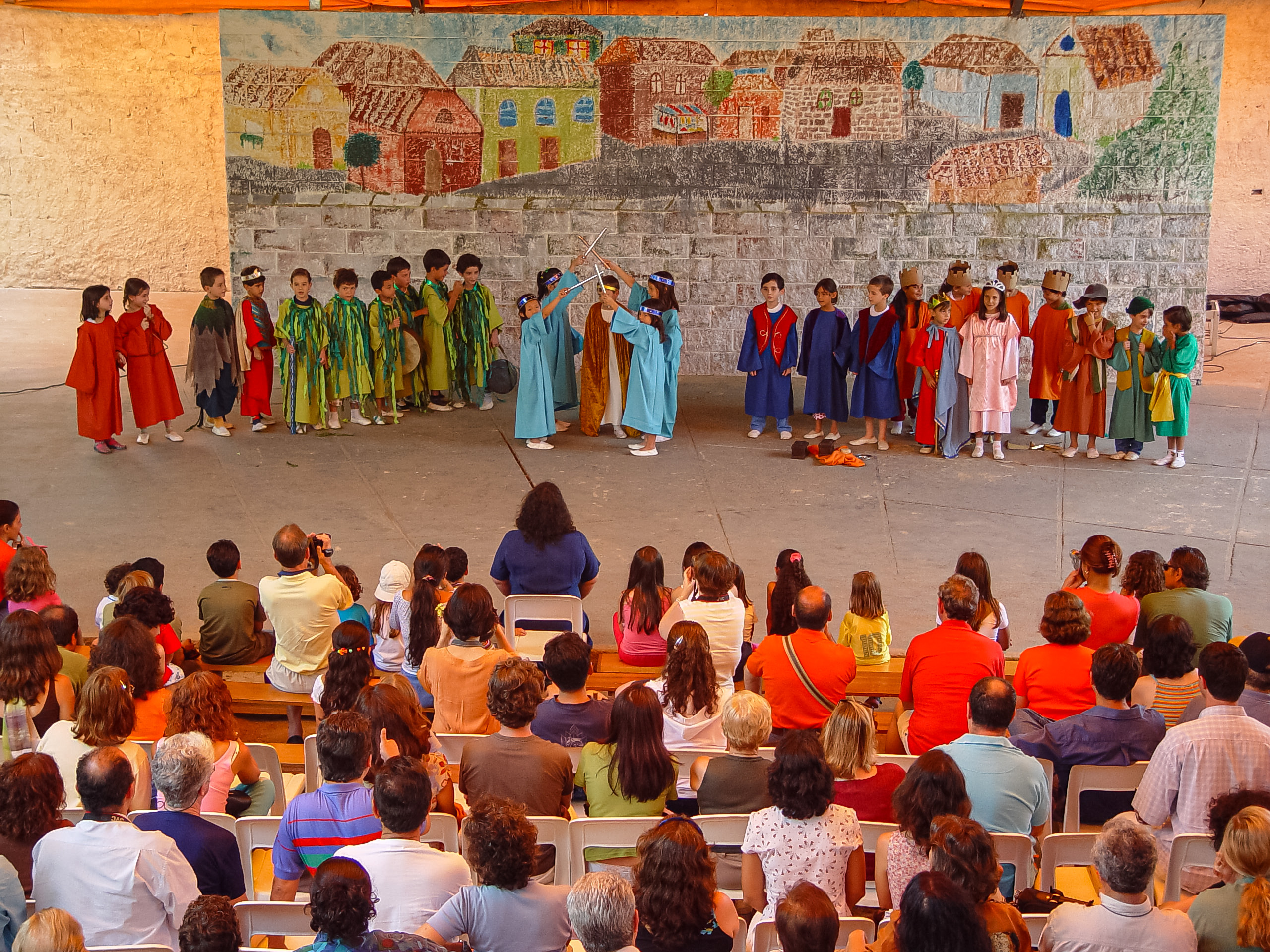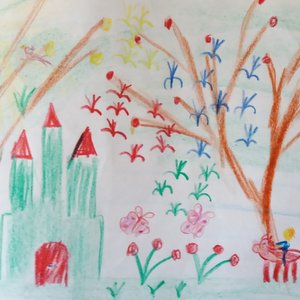[print-me target="body"]
play by Ernst Schuberth
translated from English and slightly adapted by Ruth Salles
Children represent the numbers from the UM and within the UM, and show what they have learned in various ways. The music can be made by the music teacher in a pentatonic scale.
CHARACTERS: small choir apart and more children who move in front and who also speak together.
ALL (line up and sing):
“From the first year
we came
and you will see
what do we know.
the first numbers
we count fast.
we have a lot of practice
in math."
(Some children – that is, 6, 12, or 24 – form a circle, holding hands, while others recite along with them.)
ALL (speaking as the circle turns):
– ONE was the world that began
and that God the Father brought with him,
until he separated
the night of the day.
That's how inside the UM
TWO emerged. (children form two circles)
And God, very happy afterwards,
for doing good things,
created people in the world.
The people then looked at themselves,
looked to God and to the world,
and they saw that the THREE was inside everything.
(circles rearrange themselves like a 3 petal flower)
People, animals,
the plants, the stones, in fact,
were also inside the UM,
within the UNIT.
(The children line up again, facing the audience.)
ALL:
– This is how the 1, 2, 3
we learn.
And now the 4, 5, 6,
7 and 8 we will show.
(A child with both feet together and arms open forms the 4. Opening the legs forms the 5. With one behind him, moving arms and legs, the other numbers are formed, and all the children count aloud, as the numbers form. Then they line up again for the audience.)
ALL:
- This is not all
that we are going to show.
Also on a wheel
we know how to count.
(Children march in a circle, in rhythm of 1, 2..., marking more 2, or in rhythm of 1, 2, 3..., marking more 3; a tambourine, tambourine or triangle can be used to help children keep up the pace.)
ALL:
– 1, 2, 1, 2, 1, 2, 1, 2….. 1, 2, 3, 1, 2, 3, 1, 2, 3…….
ALL (now standing, facing the audience):
– The numbers follow without haste,
from beginning to end and vice versa.
(Children count from 1 to 20 and 20 to 1, aloud or low, depending on the teacher's direction. Variations between groups can also be made.)
ALL:
– Do you think that's all we know?
Well, now look what we do. (Five children form a pentagon.)
AT FIVE:
– And this is not all we show.
Well, we do too!
(They group together, joining or separating differently, as the class expresses aloud what the teacher points out.)
ALL:
– 5 is equal to 2 + 1 + 2.
– 5 = 4 + 1.
– 5 = 3 + 1 + 1.
– 5 = 1 + 2 + 2.
– 5 = …….
THE FIVE CHILDREN:
– FIVE can be a lot.
Who will doubt?
Even in the rings of the olympic games he is!
ALL:
- Now,
We are leaving
no fuss,
counting from 2 to 24!
(Children walk one after the other, timing their steps and counting the even numbers from 2 to 24, then count backwards, backtracking and walking backwards.)
ALL:
– 2, 4, 6, 8, 10, 12, 14, 16, 18, 20, 22, 24…
24, 22, 20, 18, 16, 14, 12, 10, 8, 6, 4, 2…
…and come back later
from 24 to 2!
So, two by two it was easy to leave,
but it is that we wanted to say goodbye. (everyone bows)
Now we go,
counting 1, 2 and 1, 2, 3.
But won't we come back
again?
(The children all walk one behind the other, keeping pace with their footsteps.)
ALL:
– 1, 2 – 1, 2, 3 – 1, 2 – 1, 2, 3 – 1, 2, …
(If they wish, they can walk backwards again, counting backwards, and then turn to the front and wave goodbye to the audience.)
END




